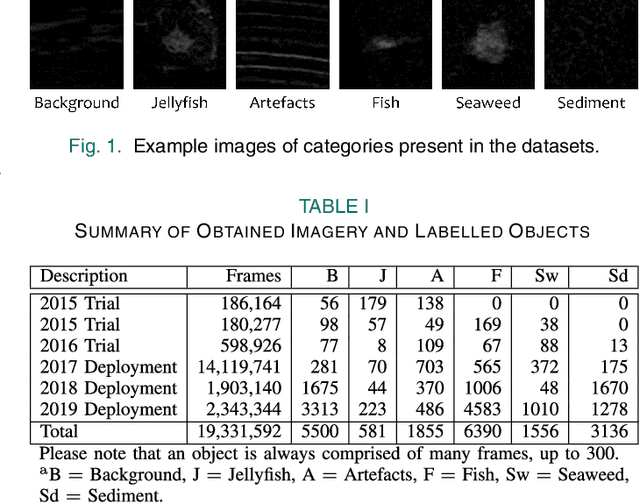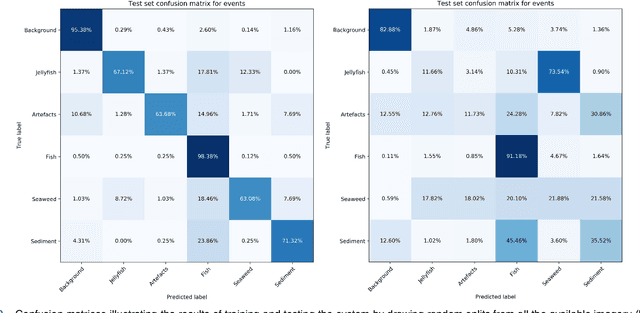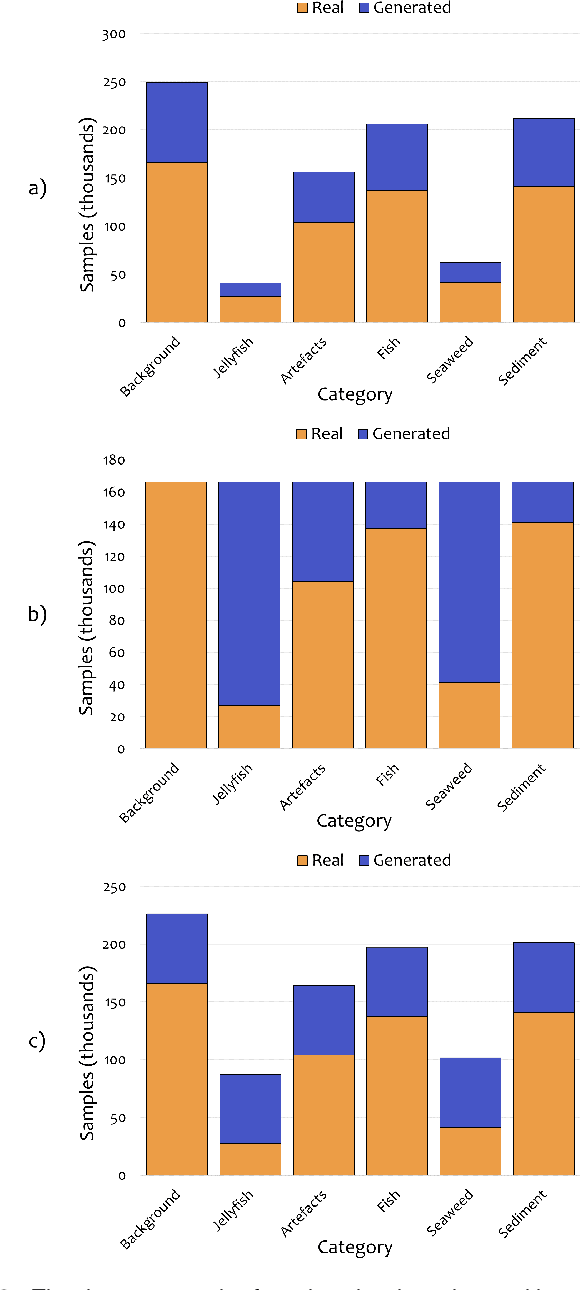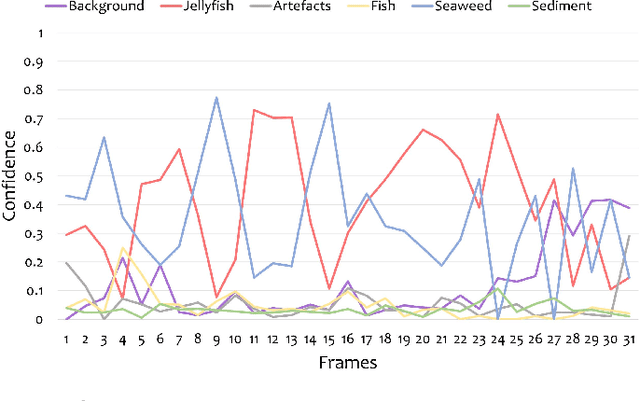Improving Automated Sonar Video Analysis to Notify About Jellyfish Blooms
Paper and Code
Mar 06, 2021



Human enterprise often suffers from direct negative effects caused by jellyfish blooms. The investigation of a prior jellyfish monitoring system showed that it was unable to reliably perform in a cross validation setting, i.e. in new underwater environments. In this paper, a number of enhancements are proposed to the part of the system that is responsible for object classification. First, the training set is augmented by adding synthetic data, making the deep learning classifier able to generalise better. Then, the framework is enhanced by employing a new second stage model, which analyzes the outputs of the first network to make the final prediction. Finally, weighted loss and confidence threshold are added to balance out true and false positives. With all the upgrades in place, the system can correctly classify 30.16% (comparing to the initial 11.52%) of all spotted jellyfish, keep the amount of false positives as low as 0.91% (comparing to the initial 2.26%) and operate in real-time within the computational constraints of an autonomous embedded platform.
 Add to Chrome
Add to Chrome Add to Firefox
Add to Firefox Add to Edge
Add to Edge